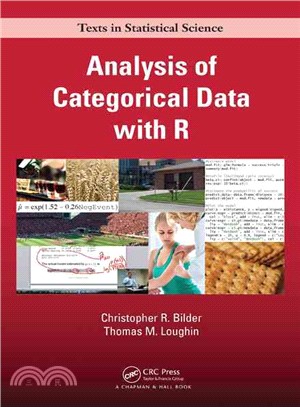 資料來源:
三民書局
資料來源:
三民書局
Analysis of categorical data with R / Christopher R. Bilder, Thomas M. Loughin.
- 作者: Bilder, Christopher R.
- 其他作者:
- 其他題名:
- Chapman & Hall/CRC texts in statistical science
- 出版: Boca Raton, FL : CRC Press, Taylor & Francis Group c2015.
- 叢書名: Chapman & Hall/CRC texts in statistical science
- 主題: Categories (Mathematics)--Data processing. , R (Computer program language)
- ISBN: 9781439855676 (bound): NT1845 、 1439855676 (bound)
- 一般註:Includes bibliographical references (p. 513-523) and index.
-
讀者標籤:
- 系統號: 000252667 | 機讀編目格式
館藏資訊

Written for students and researchers in statistics and biostatistics, this book presents a modern introduction to categorical data analysis, with R integrated into the text as a data analysis method a
摘要註
"We live in a categorical world! From a positive or negative disease diagnosis to choosing all items that apply in a survey, outcomes are frequently organized into categories so that people can more easily make sense of them. However, analyzing data from categorical responses requires specialized techniques beyond those learned in a first or second course in Statistics. We o er this book to help students and researchers learn how to properly analyze categorical data. Unlike other texts on similar topics, our book is a modern account using the vastly popular R software. We use R not only as a data analysis method but also as a learning tool. For example, we use data simulation to help readers understand the underlying assumptions of a procedure and then to evaluate that procedure's performance. We also provide numerous graphical demonstrations of the features and properties of various analysis methods. The focus of this book is on the analysis of data, rather than on the mathematical development of methods. We o er numerous examples from a wide rage of disciplines medicine, psychology, sports, ecology, and others and provide extensive R code and output as we work through the examples. We give detailed advice and guidelines regarding which procedures to use and why to use them. While we treat likelihood methods as a tool, they are not used blindly. For example, we write out likelihood functions and explain how they are maximized. We describe where Wald, likelihood ratio, and score procedures come from. However, except in Appendix B, where we give a general introduction to likelihood methods, we do not frequently emphasize calculus or carry out mathematical analysis in the text. The use of calculus is mostly from a conceptual focus, rather than a mathematical one"--




